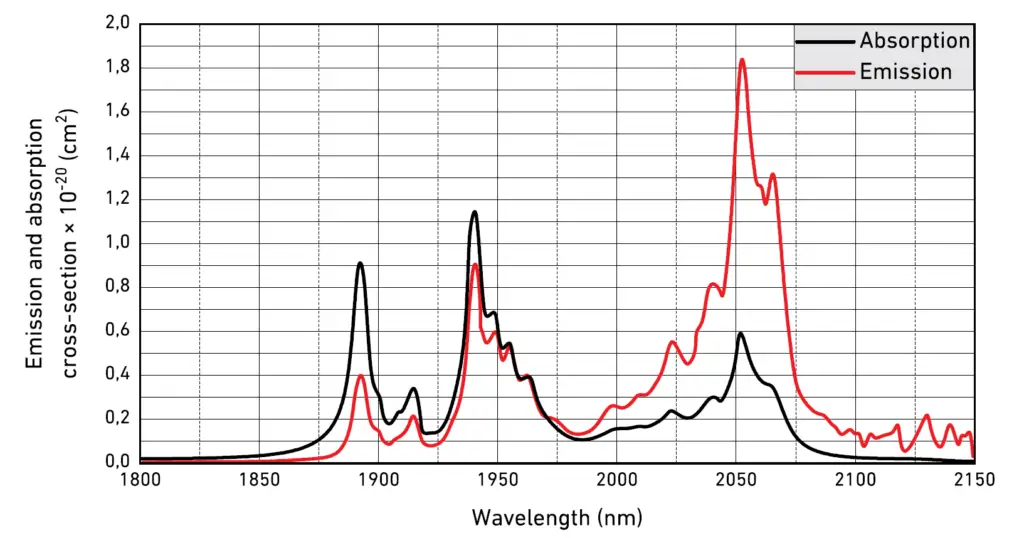Holmium-doped Yttrium Lithium Fluoride (Ho:YLF) is a highly efficient laser crystal material used in various optical applications, including industrial processing, defense, and environmental monitoring. With its naturally birefringent properties, Ho:YLF minimizes thermal lensing effects and ensures stable output. The crystal exhibits a long upper laser level lifetime, enhancing its suitability for Q-switched laser operations. The optimized doping levels, high emission cross-section, and strong absorption make it an ideal choice for generating emission wavelengths around 2060 nm, particularly for pollutant detection and remote sensing. Ho:YLF Crystal also supports customizations such as doping concentrations and coatings to meet user-specific requirements.
Ho:YLF crystals are versatile and cater to a broad range of industries:
| Property | Value |
|---|---|
| Crystal Structure | Tetragonal |
| Absorption Peak Wavelength | 1940 nm |
| Emission Wavelength | 2060 nm |
| Absorption Cross-Section | 1.2 x 10^-22 cm^2 |
| Emission Cross-Section | 1.8 x 10^-22 cm^2 |
| Refractive Index (1064 nm) | n_o = 1.448, n_e = 1.470 |
| Density | 3.95 g/cm^3 |
| Mohs Hardness | 5 |
| Thermal Conductivity | 6 W/m·K |
| Thermal Expansion Coefficient | 10.1 x 10^-6 K^-1 ( |
| Typical Doping Level | 0.5% |
| Optical Property | Value |
|---|---|
| Absorption Bandwidth | ~18 nm |
| Lifetime of ^5I_7 Energy Level | 10 ms |
| LIDT | >10 J/cm^2 @ 2060 nm, 10 ns |
| Coating Options | AR coatings at 1900-2100 nm |
| Parameter | Specification |
|---|---|
| Orientation | z-cut |
| Clear Aperture | >90% |
| Face Dimension Tolerance | +0.0/-0.1 mm |
| Length Tolerance | ±0.1 mm |
| Parallelism Error | <20 arc seconds |
| Perpendicularity Error | <10 arc minutes |
| Surface Quality | 20-10 S-D |
| Surface Flatness | <λ/10 @ 632.8 nm |
The materials shows high absorption and emission characteristics at 2060 nm, with minimal losses and high efficiency in the Q-switched regime.

| Face Dimensions (mm) | Length (mm) | End Faces | Doping | Coatings | Price (USD) |
|---|---|---|---|---|---|
| 5 x 5 | 2 | Brewster-angle cut | 1% | Uncoated | $620 |
| 5 x 5 | 2 | Right-angle cut | 1% | AR@1900-2100 nm | $750 |
| 8 x 8 | 2 | Brewster-angle cut | 1% | Uncoated | $620 |
| 8 x 8 | 2 | Right-angle cut | 1% | AR@1900-2100 nm | $750 |
| Customization Available | Customizable | Upon request | Custom | Custom coatings | Contact Us |